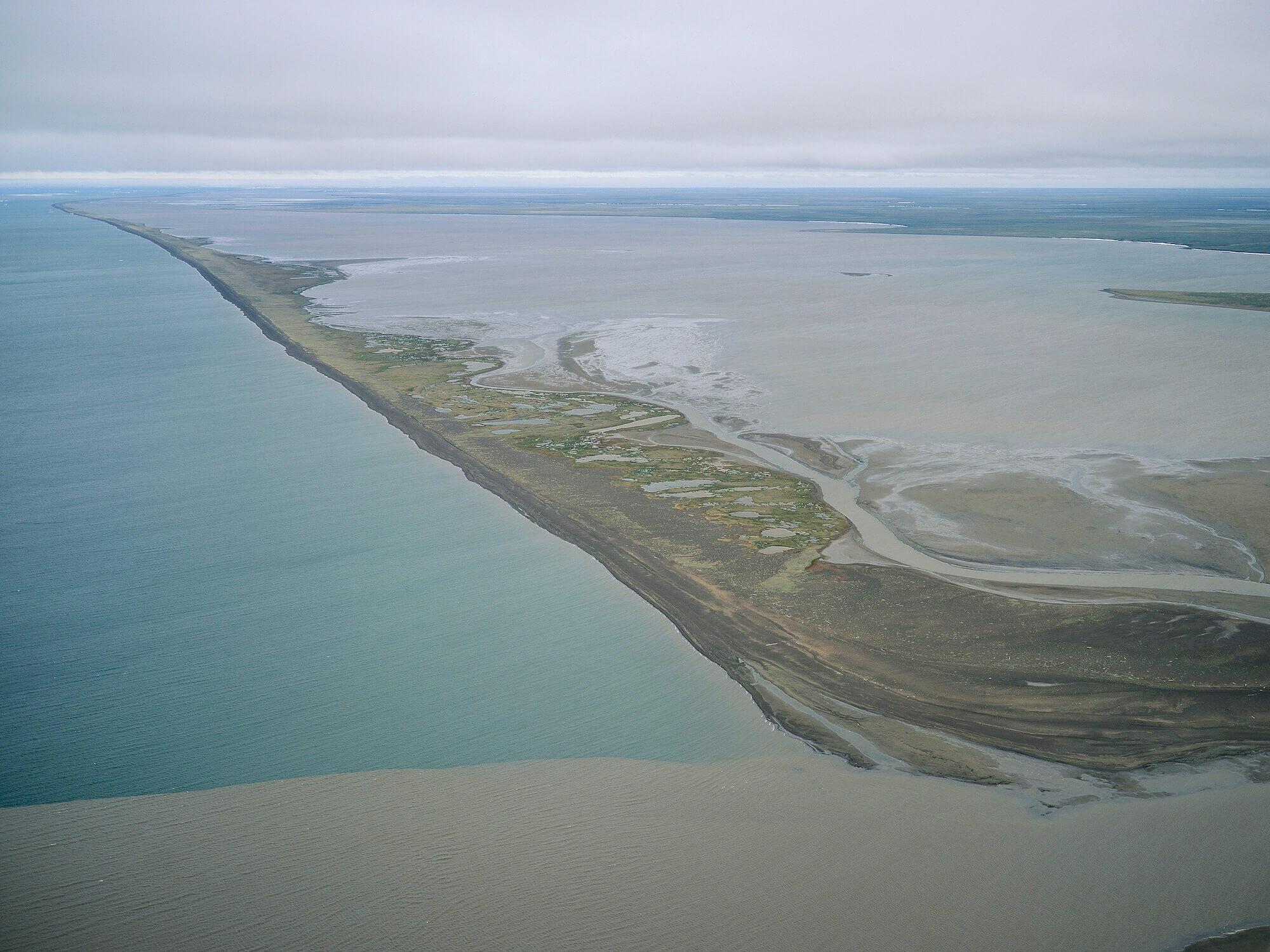The 97,000-acre Kasegaluk Lagoon Special Area is a highly productive shallow coastal lagoon and barrier island system spanning 125 miles of the Chukchi Sea coast. Approximately 40 miles of the lagoon are within the NPR–A, between Icy Cape and the community of Wainwright.
Importance to Birds
This is also a globally significant Important Bird Area, established for having the highest diversity and abundance of birds of any lagoon system in Arctic Alaska. This area provides a migration and staging corridor likely used by the entire breeding population of King Eiders in Western North America, a nesting colony of approximately 500 Common Eiders, and a migration area for as many as half of the Pacific Brant population. It’s also a high-density waterbird nesting habitat for threatened Spectacled Eiders and multiple Alaska WatchList and other species, including Pacific Brant, Long-tailed Ducks, Northern Pintails, Pacific Loons, Red-throated Loons, a variety of shorebirds, and Greater White-fronted Geese.
Pat Pourchot, retired from the Department of the Interior as Special Assistant to the Secretary for Alaska Affairs, says Kasegaluk Lagoon has, much like the other Special Areas, layered values. “It has migratory bird and resting areas in the lagoon and offshore of the lagoon, but it also has a lot of marine mammal values,” he says. Those include walrus and Beluga whale, and several species of ice seals. It’s also a denning and feeding habitat for polar bear.
Finally, it’s “important to local subsistence users,” Pourchot says. The coastal area along the Chukchi Sea from Icy Cape to Point Franklin, including Kasegaluk Lagoon, is valuable to the Wainwright as a subsistence harvest area for marine mammals and birds.
Management of Kasegaluk Lagoon
The current area-wide management plan for the National Petroleum Reserve-Alaska places several designated Special Areas, such as the Kasegaluk Lagoon Special Area, off-limits for oil and gas leasing. This plan provides a responsible balance that protects ecologically sensitive areas while still allowing energy development to occur in less sensitive areas.
How you can help, right now
Donate to Audubon
Help secure the future for birds at risk from climate change, habitat loss and other threats. Your support will power our science, education, advocacy and on-the-ground conservation efforts.
1% for the Planet
We are proud to be part of the 1% for the Planet network. If you own a business, please consider joining 1% for the Planet to support Audubon Alaska’s conservation efforts.





